The richness of life in prairies can be astounding, even at a small scale. As a prairie ecologist, I see that every day as I wander through them with my camera or clipboard, but it can be hard to portray that to a skeptical public.
Photography has been a crucial tool in my crusade, giving me the opportunity to introduce people to the plants and animals that inhabit what so many people consider “boring grassy areas”.
In 2018, I undertook a new project to celebrate the diversity and beauty of prairies. It was a way of doubling down on my frequent assertions that you can find an astounding number of species in prairies if you just take the time to look for them.
To prove the point, I went to a small restored prairie near my Nebraska house and then chose a much smaller portion of it – a 1×1 meter square – and pledged to photograph everything I could within that diminutive fragment over the course of a year.
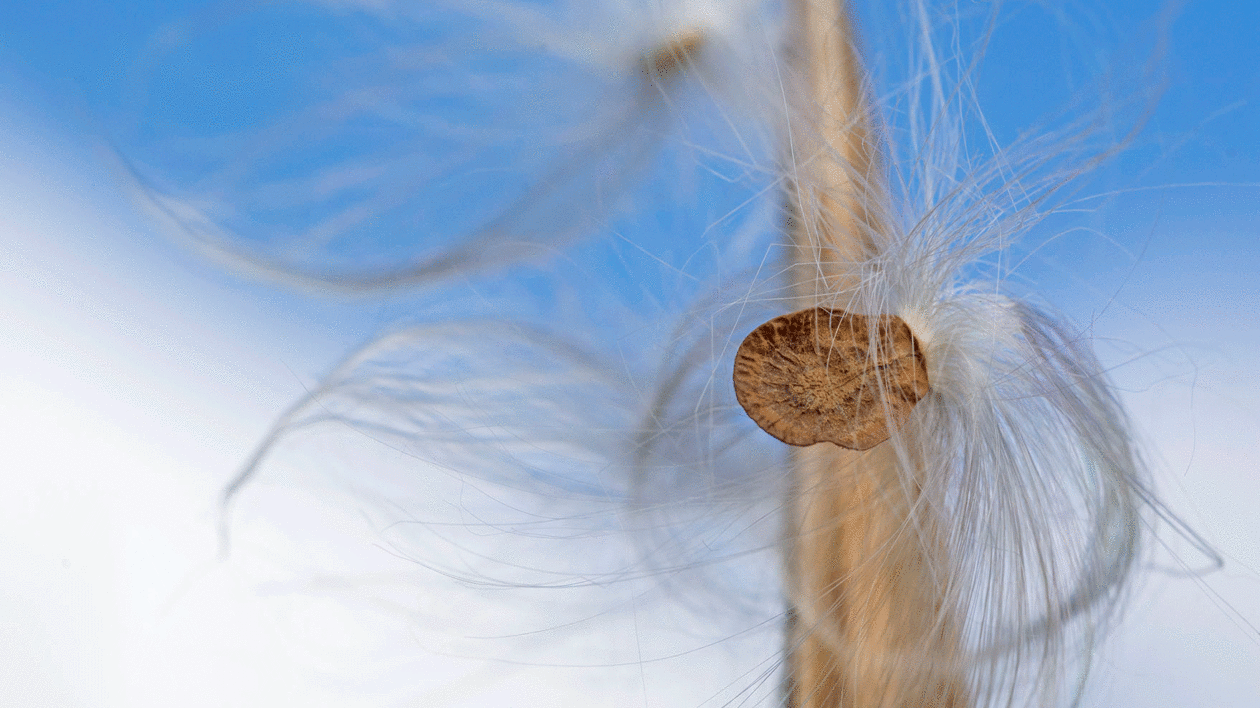
I began in late January, 2018. As of today, I’ve photographed 113 different species of plants and animals inside that little patch – not counting others that flew, scurried, or hopped away before I could snap their picture. I’ve made nearly 50 trips across town to my plot and have yet to come away disappointed. During the field season, nearly every visit yielded at least one new species.
Clearly, most of the species I photographed within my plot didn’t spend their entire lives within that tiny area.
The diversity I found was dependent upon the surrounding prairie, though even that larger prairie is only a few acres in size and fragmented by several patches of trees. The prairie is also fairly new – planted by Prairie Plains Resource Institute in the early 1980’s.
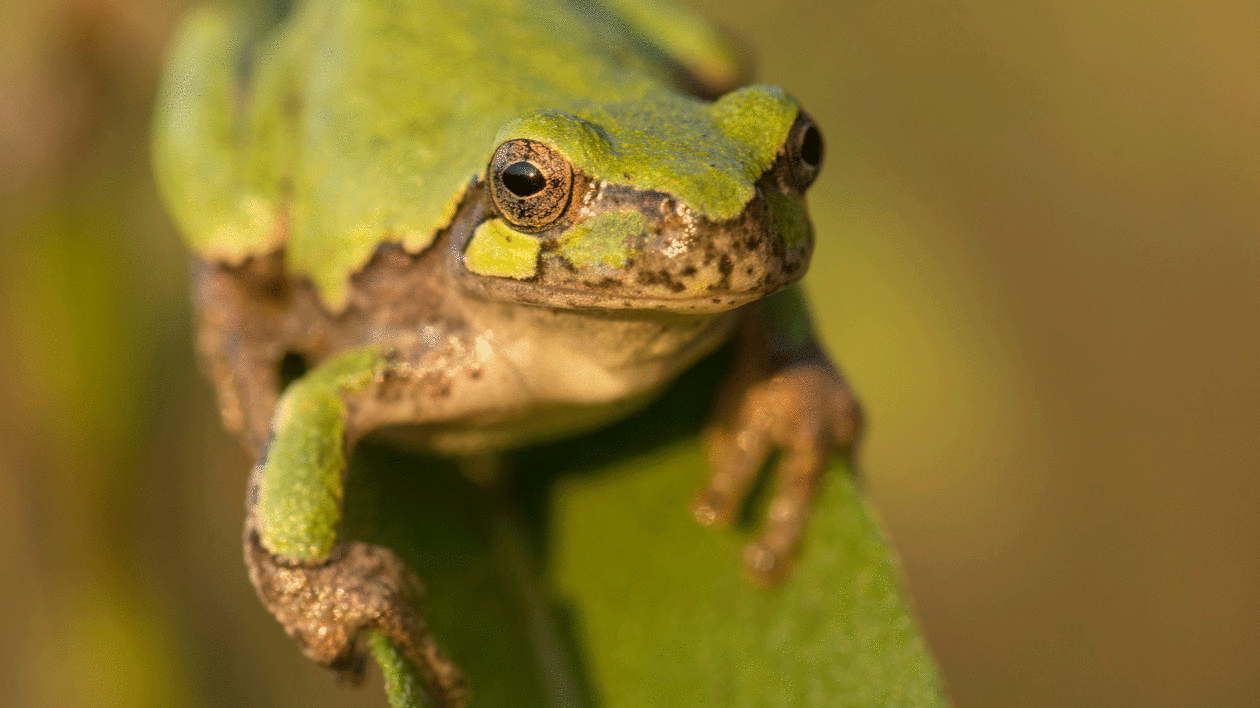
Many people might be surprised to find 113 plant and animal species within a small unassuming prairie nestled between a suburban neighborhood and a corn field, let along within a single square meter of it. That is pretty much the crux of the project.
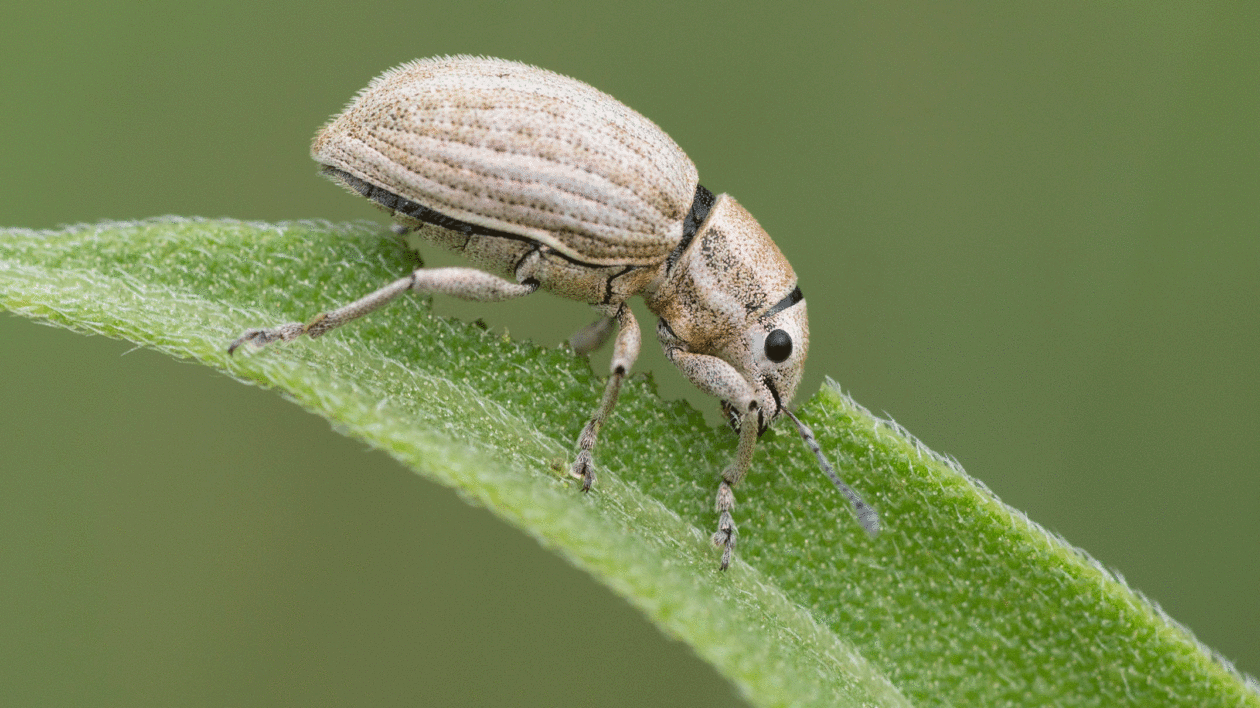
Among the eighteen beetle species is bright red one that, like monarch caterpillars, feeds exclusively on milkweed plants. Another decapitates sunflowers so it can lay eggs inside the exposed stem.
The seven spider species I found within the plot represent a range of hunting strategies, including some that catch food in webs, but also some that stalk and/or ambush their prey.
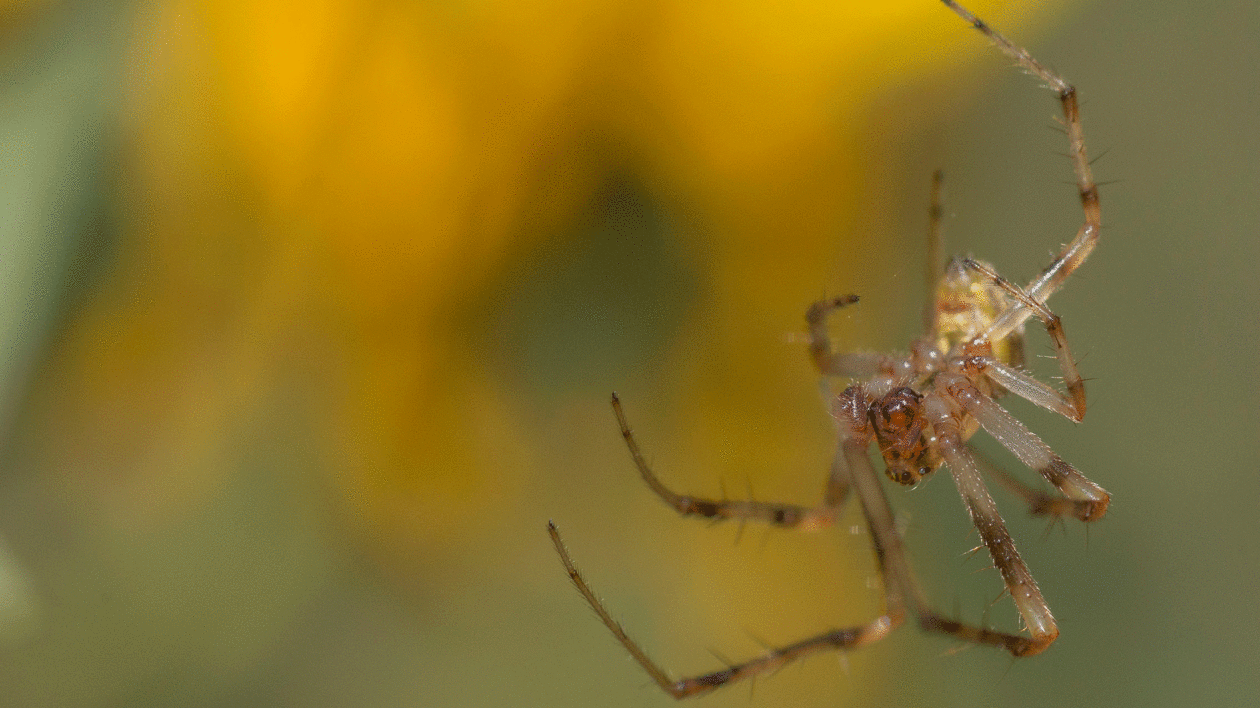
I was thrilled to photograph two different monarch butterflies inside the plot, the more so because of their current population declines.
However, I was equally excited by the sunflower stem that looked like a miniscule woodpecker had drilled a hole into it – clear evidence of a stem borer moth caterpillar at work.
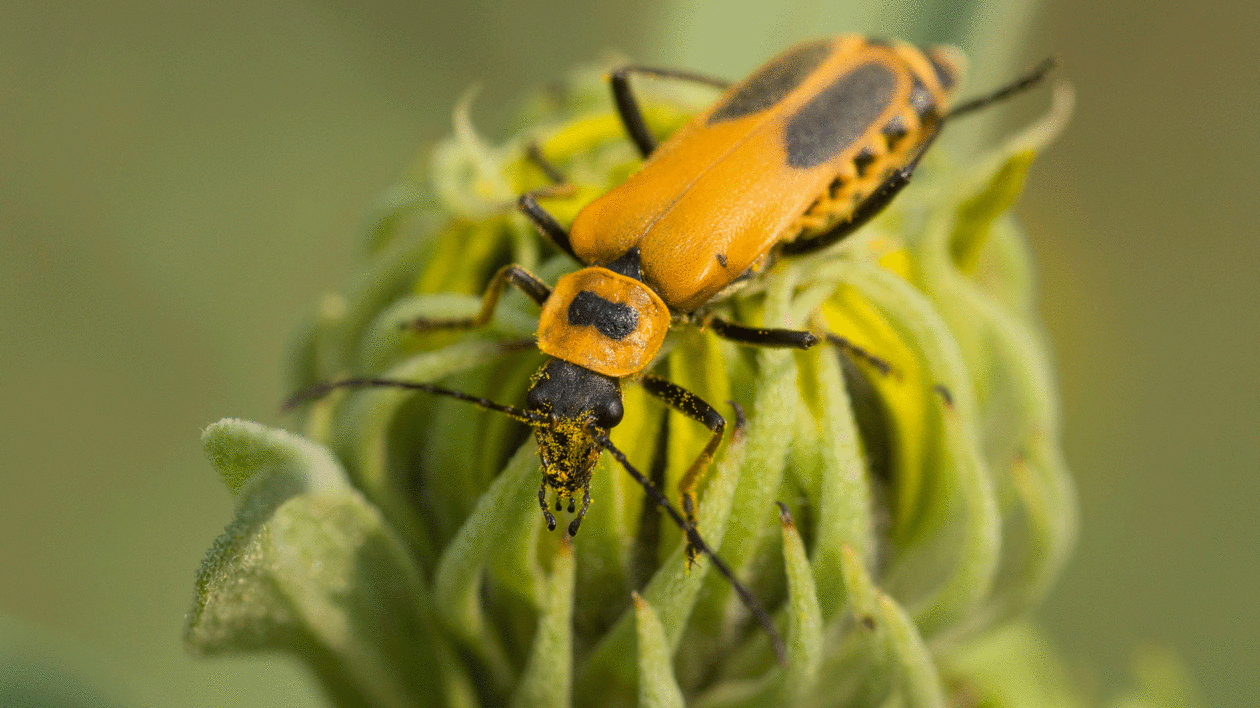
The most diverse group of insects found in my square meter was the flies. There were twenty one different kinds of flies, including some that resemble the familiar house fly, but others that few people would recognize as flies.
For example, a bee-mimicking hover fly was a common visitor throughout much of the season. I also photographed a crane fly that looks like a massive mosquito and a gall midge with an ovipositor (tubular egg-laying organ) as long as its body.
My favorite of the flies, though, was Delphinia picta, a gorgeous picture-winged fly that looks like it’s wearing a gas mask, feeds on rotting vegetation, and blows bubbles as part of its courtship behavior.
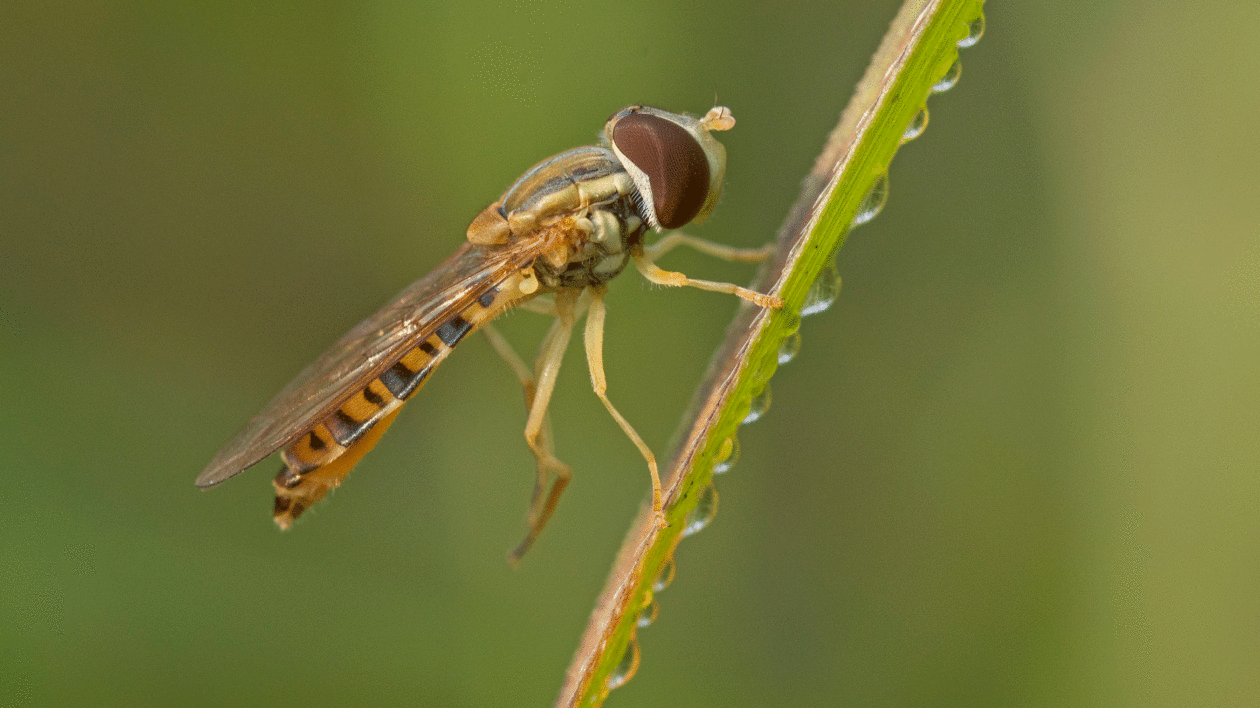
Despite the impressive diversity of organisms I found, this project was about much more than biological inventory. I found myself inspired to photograph tiny feathery anthers on the flowers of grasses, an exquisite network of veins in a backlit leaf, and gracefully drooping petals of flowers as they wilted.
Because I confined my exploration to such a limited geography, I looked at the prairie in new ways. Eschewing my typical photography approach of roaming broadly across prairies, looking for something of interest, I instead sat down and examined my plot inch by inch for appealing subject matter. I always found it. I hope others will find it among my photographs.
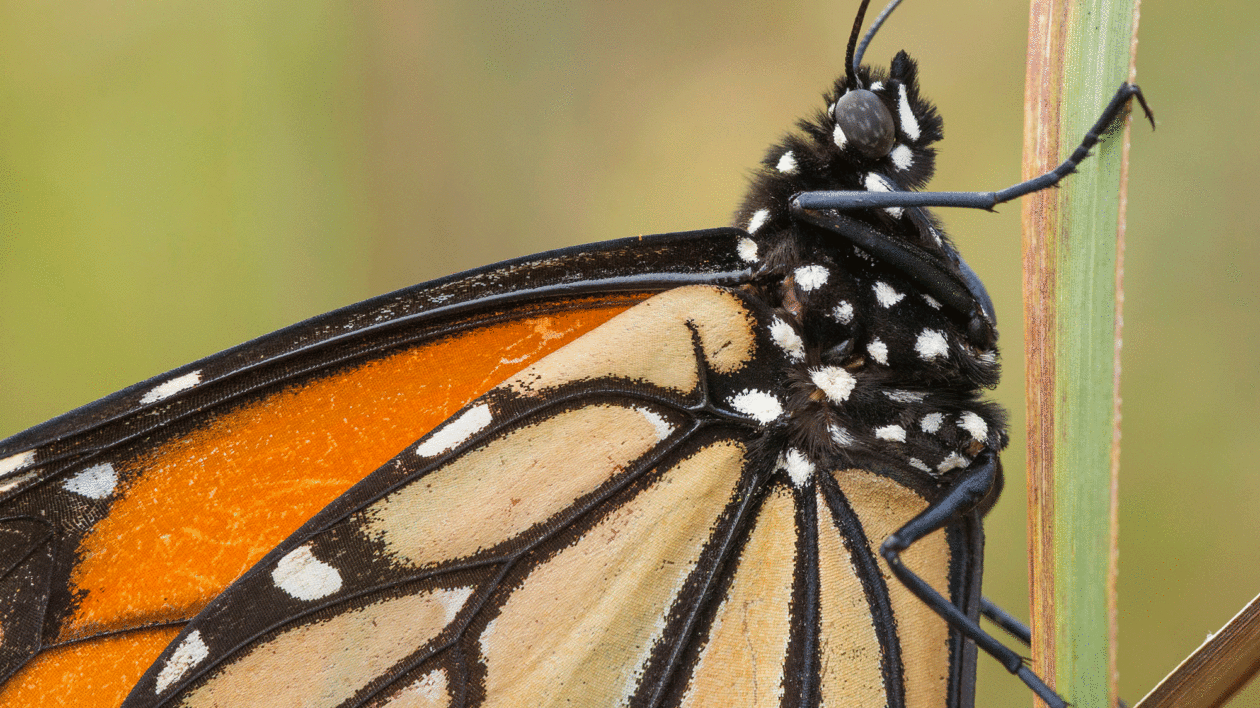
It would be great if thousands of people were sufficiently moved by my project to go explore the nearest prairie. It would be great, but I’m not counting on it. Instead, I’d be thrilled if people took a moment, looked through some of my photos, and thought to themselves, “huh, I had no idea there was so much going on in prairies!”
Just as it’s easier to empathize with people in far-off places after you’ve met a few of them, seeing some of what lives in prairies makes those prairies harder to dismiss as “boring grassy areas.” I love prairies and want to see them conserved. Showing others what I love is an important step in that process.
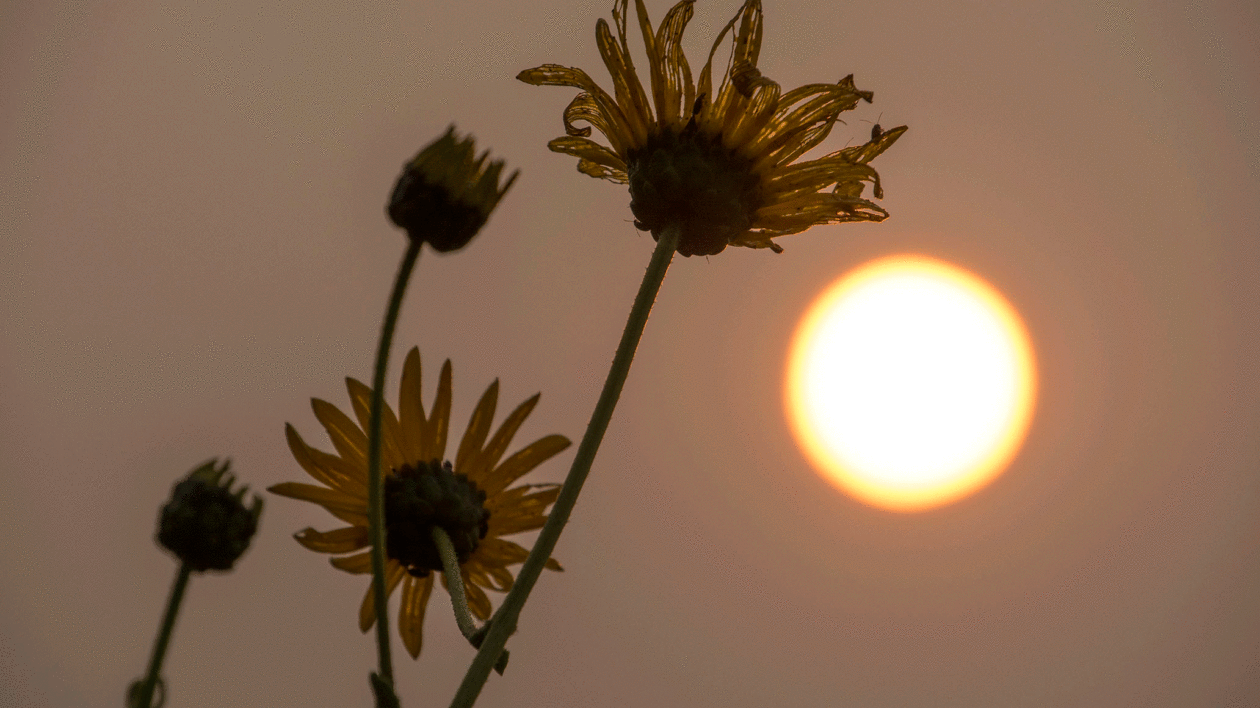
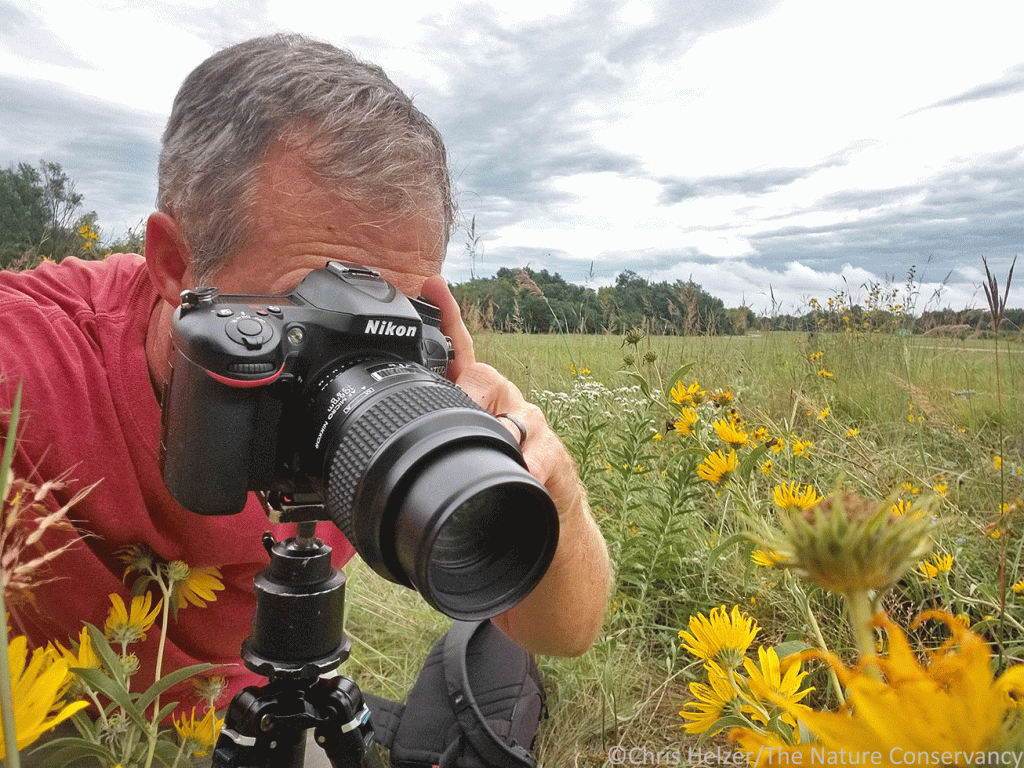



I fell in love with prairie from a picture in a book when I was just a kid, maybe 11 years old. When the chance came, I transferred from a college in Oregon to a college in Montana and have lived mostly on one kind of prairie or another since then (I’m much, much older now). I have found that living here requires me to slow down and savor the sights and sounds around me. I am always amazed at what there is to see and I have never seen a sunset here that did not dazzle me. I do miss the mountains of my childhood (northern California) but have no desire to go back. This is my home.
fannnntastic!
Very interesting and inspiring. What a fun project that can make a difference. Thank you for sharing this article and your beautiful photos. Young students would love this project as well as myself (much older).
It would be really interesting to revisit in depth this same exact patch of Prairie periodically to see how it evolves. There’s no way this patch has attained it’s end state.
Thank you for the terrific photos! I love the prairie too.
Thank you for sharing your wonderful photos! We are fortunate to live near some beautiful Champaign County (IL) Forest Preserve tall grass prairie & forested parks, where we walk (w/dog) almost every day. Thanks to my iPhone, I’ve had the opportunity to take thousands & thousands of photos in every season of nature’s wonders. You are an inspiration!
Your pictures aren’t just beautiful, they are technically exquisite! This project should be shared extensively across the country. Great job!
Excellent! And I like the comparison to meeting people from other places.
I’ve been doing something similar in Houston Texas, photographing and writing about what I encounter in Buffalo Bayou Park, which is part of a prairie restoration effort along the Gulf Coast. https://buffalobayou.org/blog/. I had not thought about a meter square project and I am fascinated and thrilled to see all you have done. Inspired, I will be doing the same in my park. How did you select your square meter? As I contemplate the same, the initial selection seems to be somewhat important. Thanks so much for the work and for sharing it.
Hi Alisa, I’m glad you enjoyed the project! I chose my square meter based mostly on convenience (easy to get to) but also made sure it had a couple plant species in it that I thought would attract insects. It’s a pretty typical square meter within the prairie around it, but I did just make sure it had the previous year’s skeletons of butterfly milkweed, ironweed, and the two sunflower species. Most everything else was a surprise!
Cool project! And nice companion with David Haskell’s The Forest Unseen.
Wonderful article. Hope it encourages people to slow down and look.
So much exposed here in picture and in text! Thank you for giving our precious prairies inhabitants a voice.
Brilliant, well written article on the many aspects of a prairie…prairie up!!!
A wonderful exploration! Beautiful!
As an art teacher one of the challenges I gave my kids was to mark off a square foot of field or lawn (or wherever we were) and draw what they could find. Everyone had a magnifying glass.
The kids loved it…and I did too!
This was obviously done in the Tall Grass Prairie which is virtually all under cultivation now because it is on some of the best soil in the world. It should not be confused with the Mid-grass or Short-grass prairies. It is an excellent work for an entomologist, but it is woefully unsatisfactory from a botany stand point. None of the iconic species of tall grass such as big bluestem, little bluestem, cane bluestem (all different genera), reed grass, Indian grass, etc. It neglects the beautiful forbs like bush morning glory, vervain, leadplant, gayfeather, larkspur, lupine mint, bee balm and a host of others. Therefore I was quite disappointed.
I cannot understand your comment. Yes, his observations were made in a small remnant of tallgrass prairie which would not have been possible if it had all been destroyed per your comment. Yes, about 98% of tallgrass prairie has been destroyed but the Flint Hills of Kansas has much of the large, remaining tallgrass in areas such as the Tallgrass Prairie National Preserve, Konza Prairie, Chase Lake Prairie, and others. Other small remnants exist. You imply that big bluestem and Indiangrass are missing but they are plainly visible in his photograph. Great plants such as bush morningglories generally aren’t found in the tallgrass prairie but on gravel breaks, rock outcrops, and sandhills habitats more characteristic of mid-grass and sandhills prairies. Their absence doesn’t make this prairie less valuable. The author was trying to show how incredibly diverse even a small patch of prairie can be and he accomplished that admirably. If he can help people appreciate the value and diversity of even small prairies, maybe more tallgrass and other prairie remnants will be protected.
Donald, if you’re interested, you can click the link to my more in-depth page on this project. There you’ll find plenty of plant photos. There were 15 plant species within the square meter – not great for remnant eastern tallgrass prairie, but pretty respectable for a restored western tallgrass prairie (former cropland), which this was.